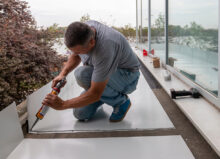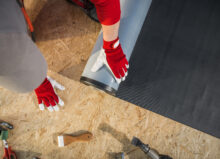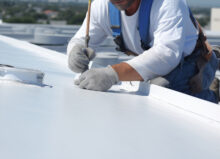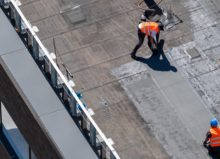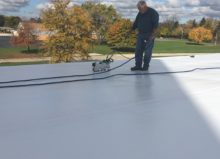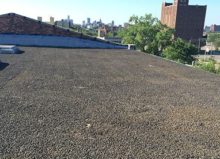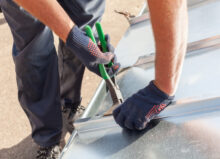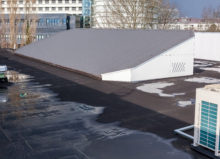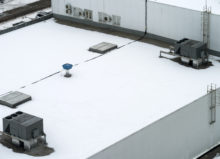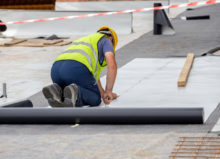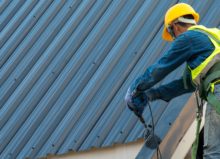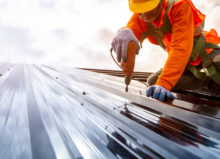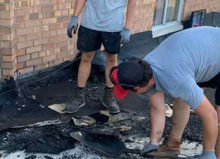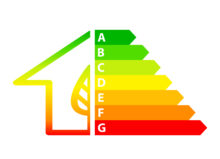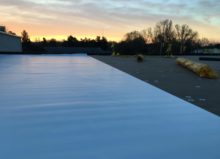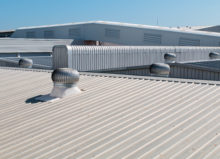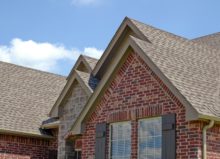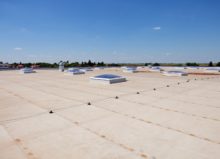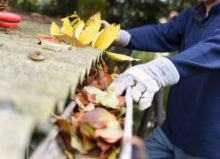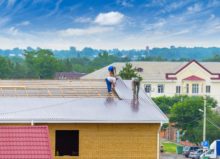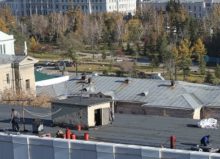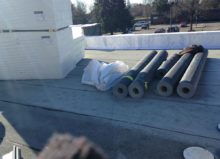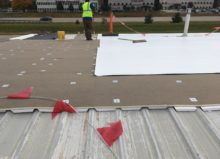An Overview of the Commercial Roof Replacement Process
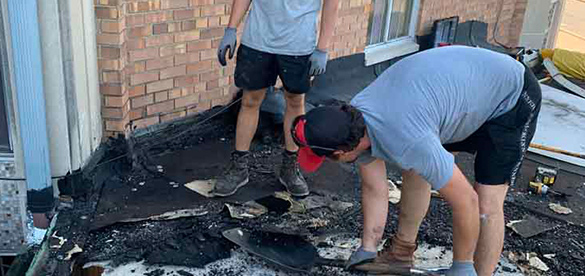
Commercial flat roofs can last anywhere from 15 to more than 45 years, depending on the material it’s made from and the level of maintenance it’s received. However, if you’re a business owner or property manager, you’ll likely have to replace the roof at least once throughout your career. In some cases, roofs may be restored with repairs, but in other situations, a commercial roof replacement may be necessary.
Generally, if your roof is reaching the end of its predicted lifespan, it’s best to replace it. Another indicator is if the cost of the repairs will be more than half of the cost of a new roof. In this situation, it’s best to get a new roof. If you’re not sure whether you need a total replacement or repairs, you should schedule a professional inspection with a roofing company.
If you do need a roof replacement, you shouldn’t procrastinate. A roof protects you and your employees from the rain, wind, and sun and prevents further structural damage to your property, which can be costly to repair. Although no property owner looks forward to a roof replacement, the benefit is that it’s relatively hassle-free if a professional is involved. Let’s look at the steps involved in the commercial roof replacement process.
Step 1: Assessing the Current Damage
A professional inspector will carefully assess the roof’s overall condition and take note of both minor and major issues. They’ll be able to quickly diagnose blistering, cracks, damage to seams, water pooling issues, holes, and other structural issues.
Once the extent of the issues is determined, the inspector will provide a recommended course of action (usually either repairs or a replacement), a cost estimate, and an estimated timeline of completion.
Step 2: Choosing & Hiring a Contractor
Not all roofing contractors are created equal, and you want to ensure that you’re working with one that’s credible, ethical, and experienced. Some of the factors you’ll want to weigh when selecting a roofing contractor include:
- Expertise: Does the contractor have experience installing commercial roofs? How long have they been in business?
- Credibility: Is the contractor an authorized installer of certain brands and products?
- Service Area: Do they service the area where your property is located?
- Customer Reviews: What do the firm’s previous customers say about them? Do some online sleuthing and read customer reviews and ratings before hiring a contractor.
Beyond this, you’ll also want to take note of any professional associations or organizations the contractor belongs to and look at their portfolio. If they don’t want you to see their portfolio, or they don’t have one, don’t hire them.
Step 3: Planning the Replacement
A good contractor is also a trusted advisor during the planning phase of the commercial roof replacement process. This is the stage where you’ll need to pick your roof material (PVC, metal, EPDM, etc.) and the design and determine any prep work that needs to be done.
You’ll also have to work to determine what type of replacement is necessary: a tear-off or a complete re-roof. A tear-off is when the old roof is removed and a new one is installed in its place. Comparatively, a re-roof usually consists of an overlay or new roofing system installed directly over the existing roof.
Step 4: Removing the Old Roofing System
If you proceed with a tear-off, the existing roofing system will need to be removed and discarded. This is typically done layer-by-layer until workers get down to the roof decking. At this point, the decking can be inspected and addressed accordingly. This step will conclude with preparing the roof, so it’s ready for installation. Prep often consists of replacing any decking, installing edges and borders, installing new insulation, and then installing a new membrane to seal everything under it from moisture and water.
If you’re proceeding with a re-roof, removing the old system is unnecessary.
Step 5: Installing & Sealing the New Commercial Roofing System
Once the old roof is removed and the prep work is done, it’s time to install the new roofing system. Depending on the size of the project, material availability, and the type of replacement being done, installation may take anywhere from a few days to a few weeks. Your contractor will give you a more accurate timeline estimate.
Is Your Commercial Flat Roof Due for a Replacement? Contact Summit Commercial Roofing Today
Don’t put off your roof replacement. If you need to replace your roof or schedule an inspection, turn to Summit Commercial Roofing. We’re a family-owned and -operated roofing company that has been helping commercial property owners in Southeast Michigan for over 50 years.
We specialize in commercial flat roofing, including PVC, EPDM, and metal roofing, and are proud members of the National Roofing Contractors Association, Midwest Roofing Contractors Association, and the Construction Association of Michigan.
You can view our portfolio of past projects on our website or contact us today to schedule a roof inspection.

